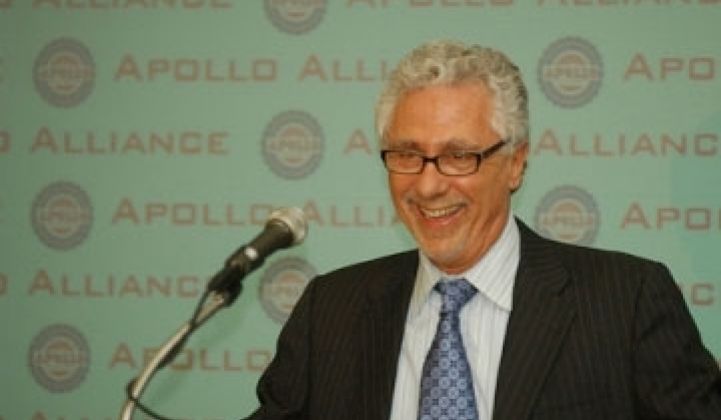Reporting from the Intersolar Solar show in San Francisco, California -- I spoke with Ron Kenedi, Vice President of Sharp's Solar Energy Solutions Group.
Kenedi has been in the solar business for a while. Prior to Sharp, he worked at Kyocera, and he remembers the bad old days when solar was "a pre-niche market -- a gleam in people's eyes."
In Kenedi's recollection, "It was a market borne of absolute necessity, primarily for use in remote areas or for the space program. There were experimenters and folks who were working off-grid who wanted to use the technology and a few survivalists, as well -- solar was a technology that could help them live remotely."
He went on to say, "My first customers in solar were industries that needed solar for remote applications like off-grid living and working. This included ranching and industrial applications such as monitoring and telemetry of oil platforms and gas flows; lighting, call boxes, signage, water pumping, village power and water delivery. Solar was also used in recreation, to help power RVs and boats. And today, many of those original applications are still going strong."
Kenedi added, "Back then, we didn’t even contemplate the concept of 10 gigawatts. Solar modules were 50 or fewer watts, and arrays were about two or three modules."
Things have changed.
Sharp is now the number-three solar cell supplier (behind First Solar and Suntech), with about 600 megawatts of cells shipping in 2010 and according to Kenedi, "We're doing well in all markets." His view on supply issues is that "everybody is sold out." (Maybe the tier-one players are sold out, but there's plenty of capacity in the solar industry.)
Sharp seems to have a contrarian strategy. While other amorphous silicon (a-Si) vendors (Signet and others) are flirting with bankruptcy and equipment vendors such as Applied Materials are retreating from their a-Si efforts, Sharp appears to be doubling down on this thin-film silicon approach.
Sharp has a one-gigawatt-capacity factory in Osaka building tandem junction a-Si panels with decent efficiencies for this technology, in the neighborhood of nine percent.
Sharp is also completing an 18-megawatt a-Si installation in Canada through Sun Edison, as well as large deployments in Mendota, CA and Dayton, Ohio. In Kenedi's words, "thin film technology is elusive. It's not easy," but "Sharp is a bankable brand."
If Kenedi was in charge of solar policy, he "would make every attempt to get solar on the roof of every house in the U.S." He would also "make it possible to get homeowners to lease solar," and "on the grand scale, I would make sure that solar is on the roof of every federal building."
The takeaway from this interview with a leading crystalline silicon supplier is that "amorphous silicon (a-Si) will be as much as 50 percent of Sharp's solar business in the coming years."
Sharp's amorphous silicon panels:



